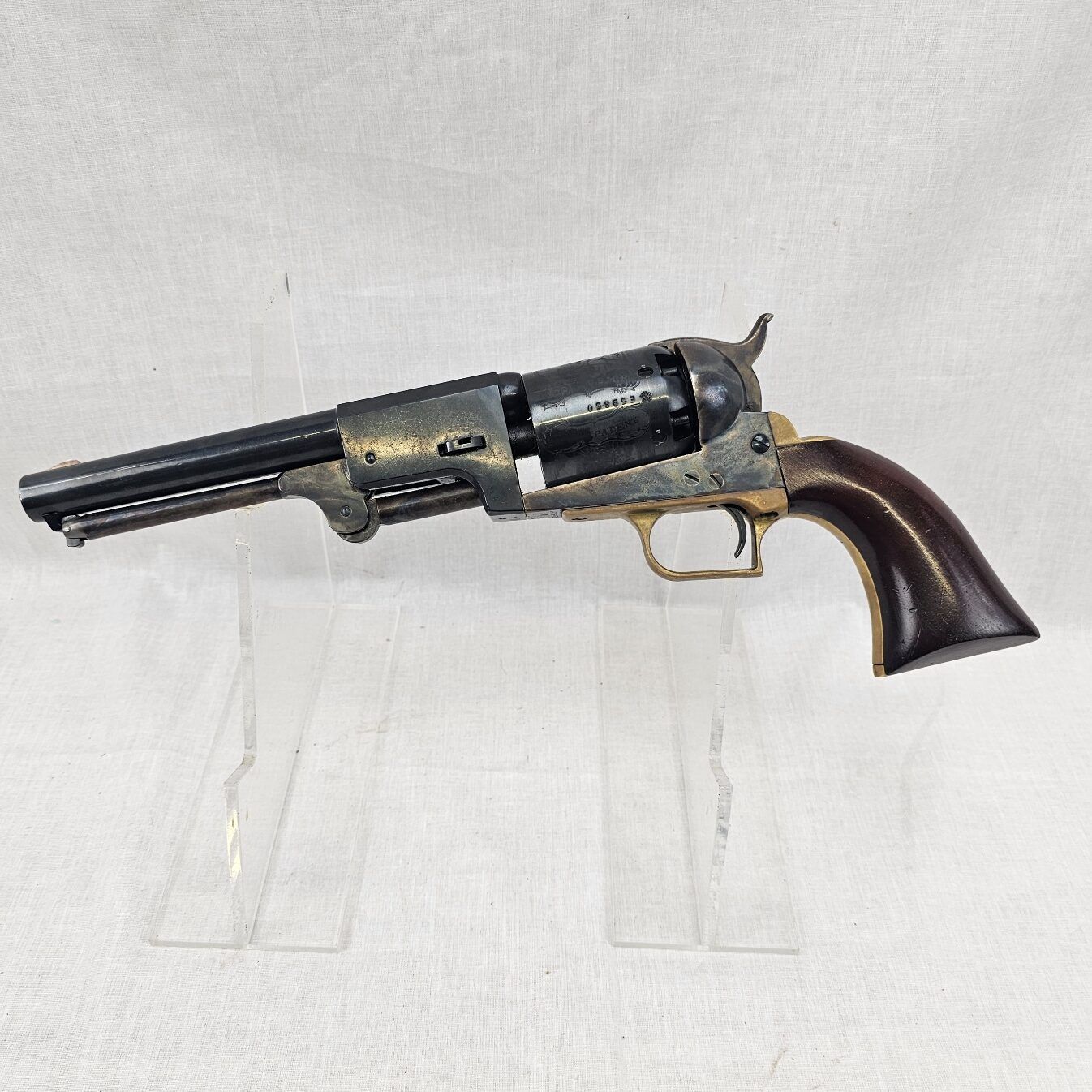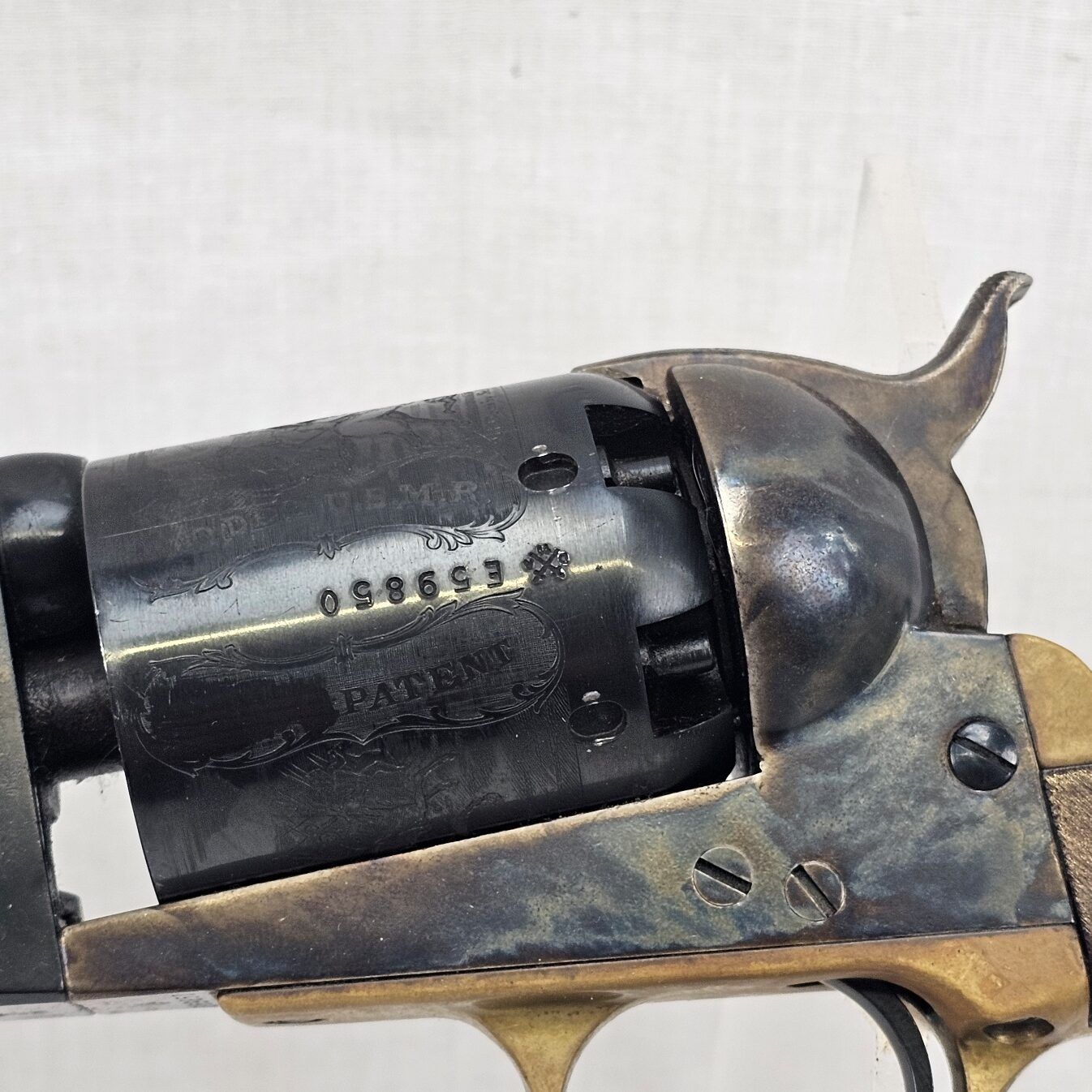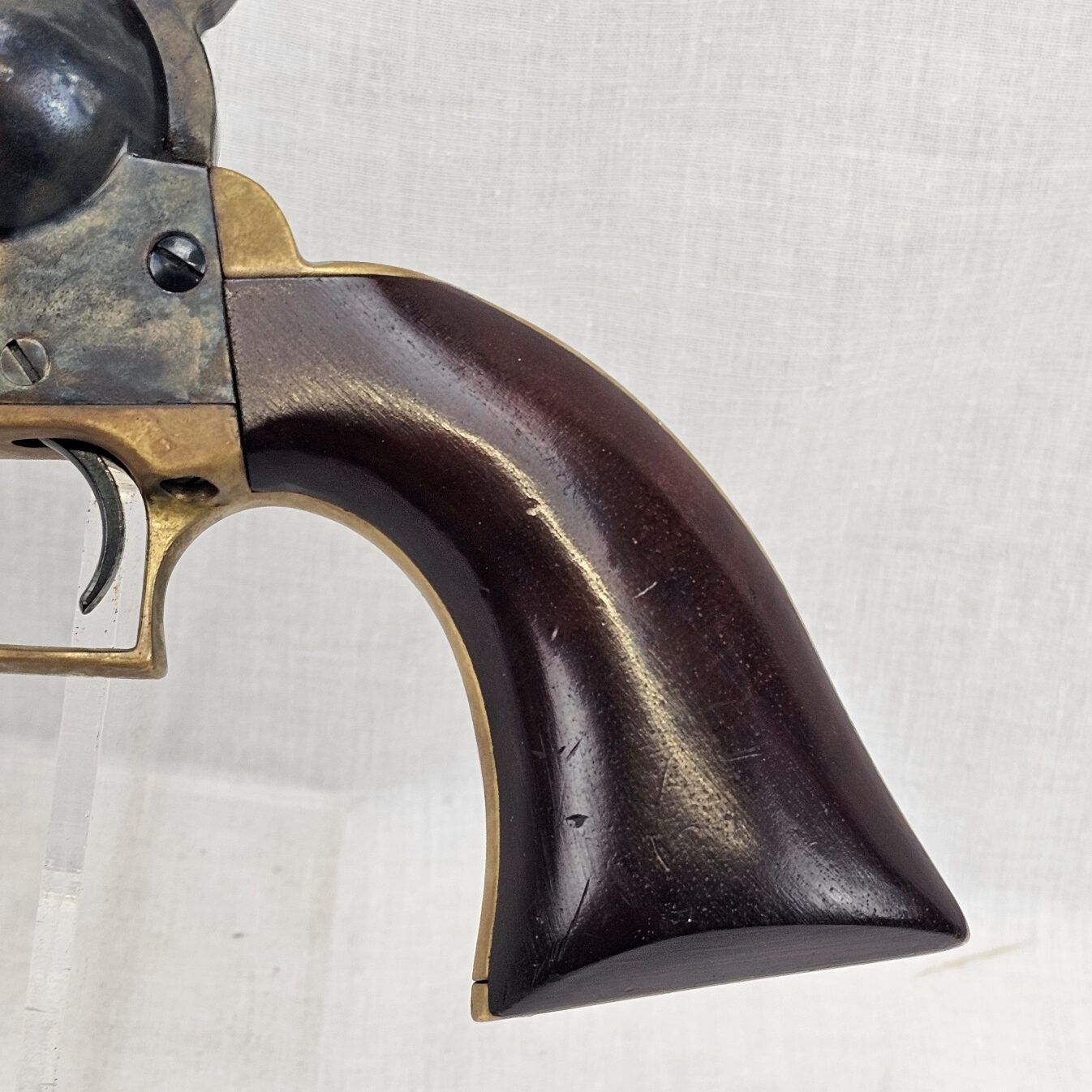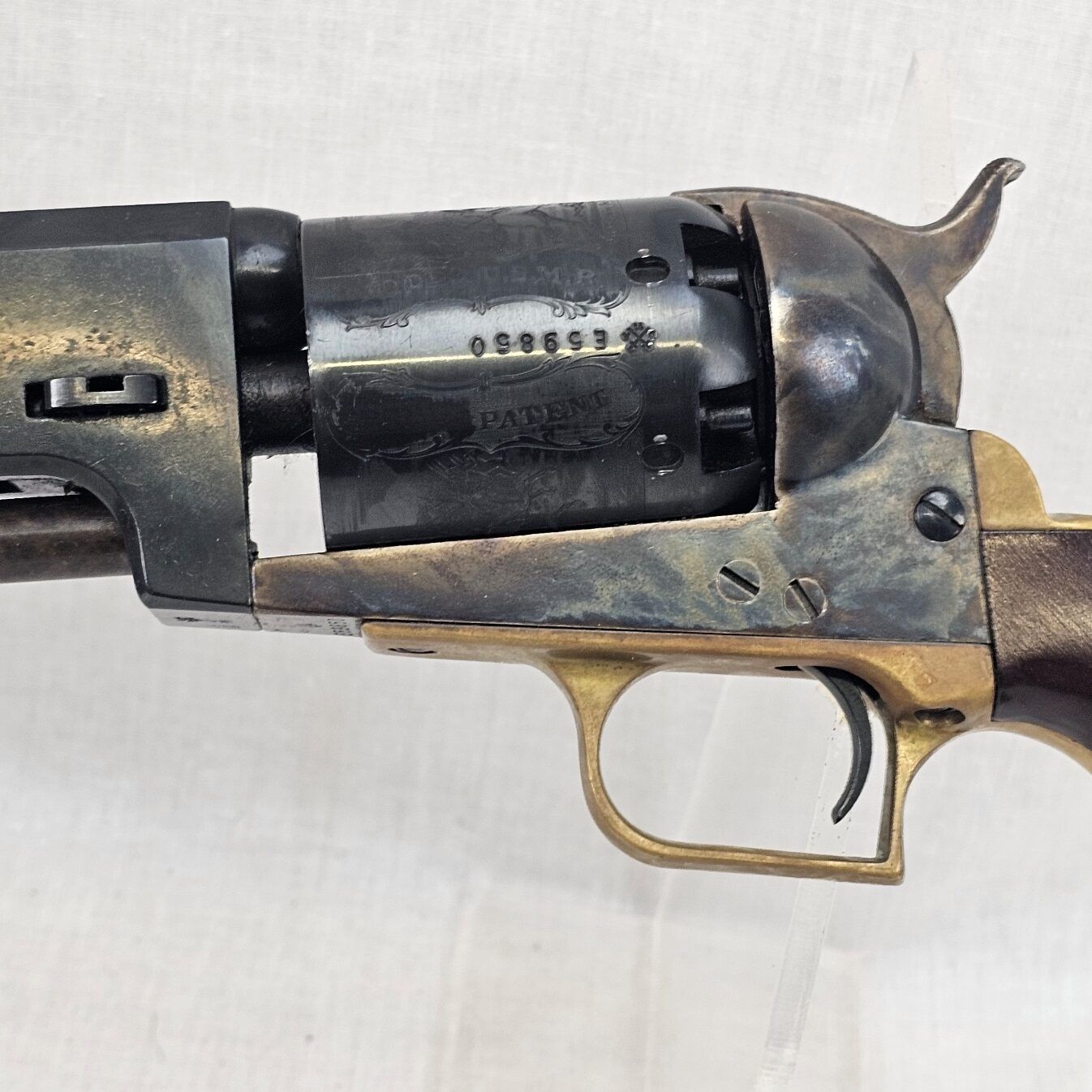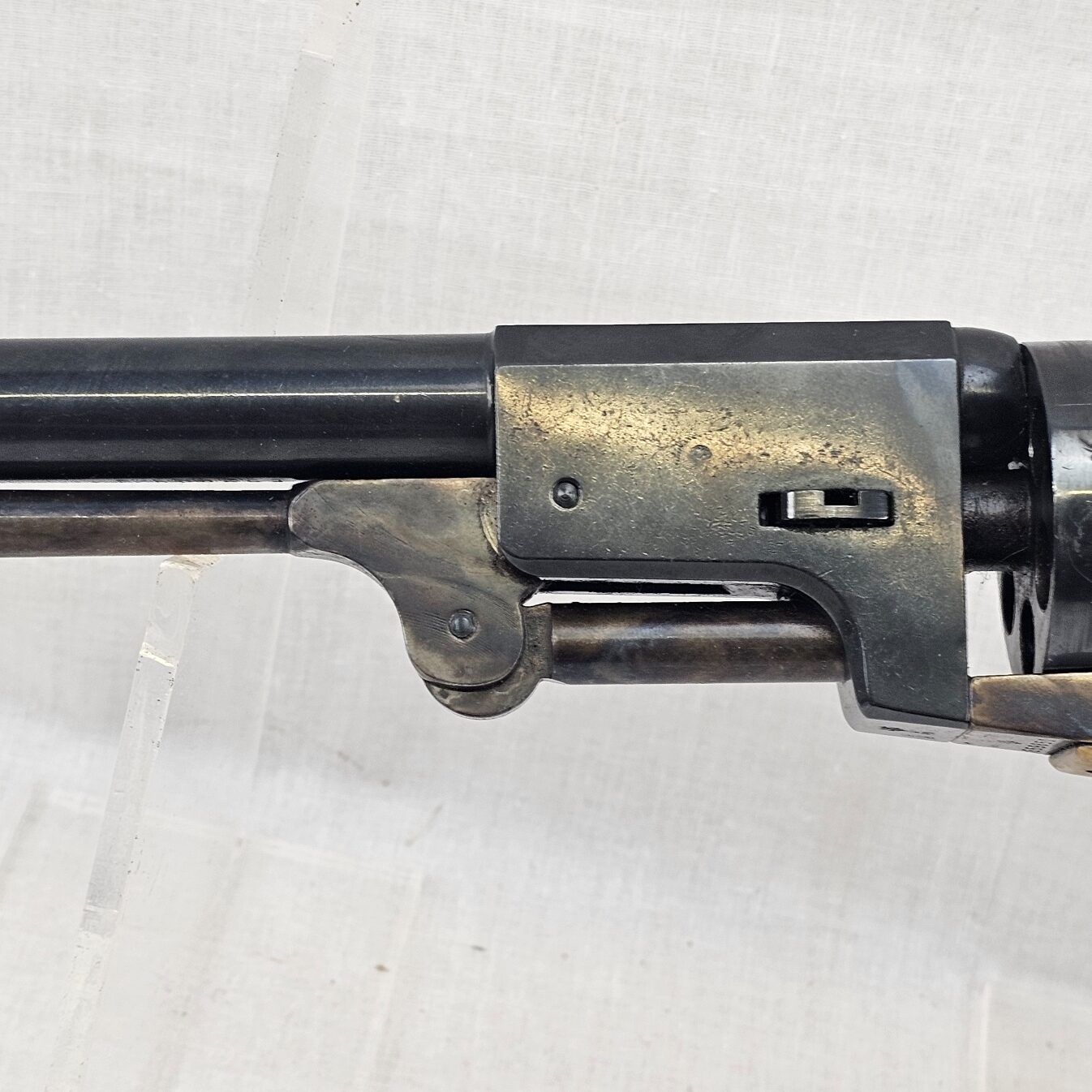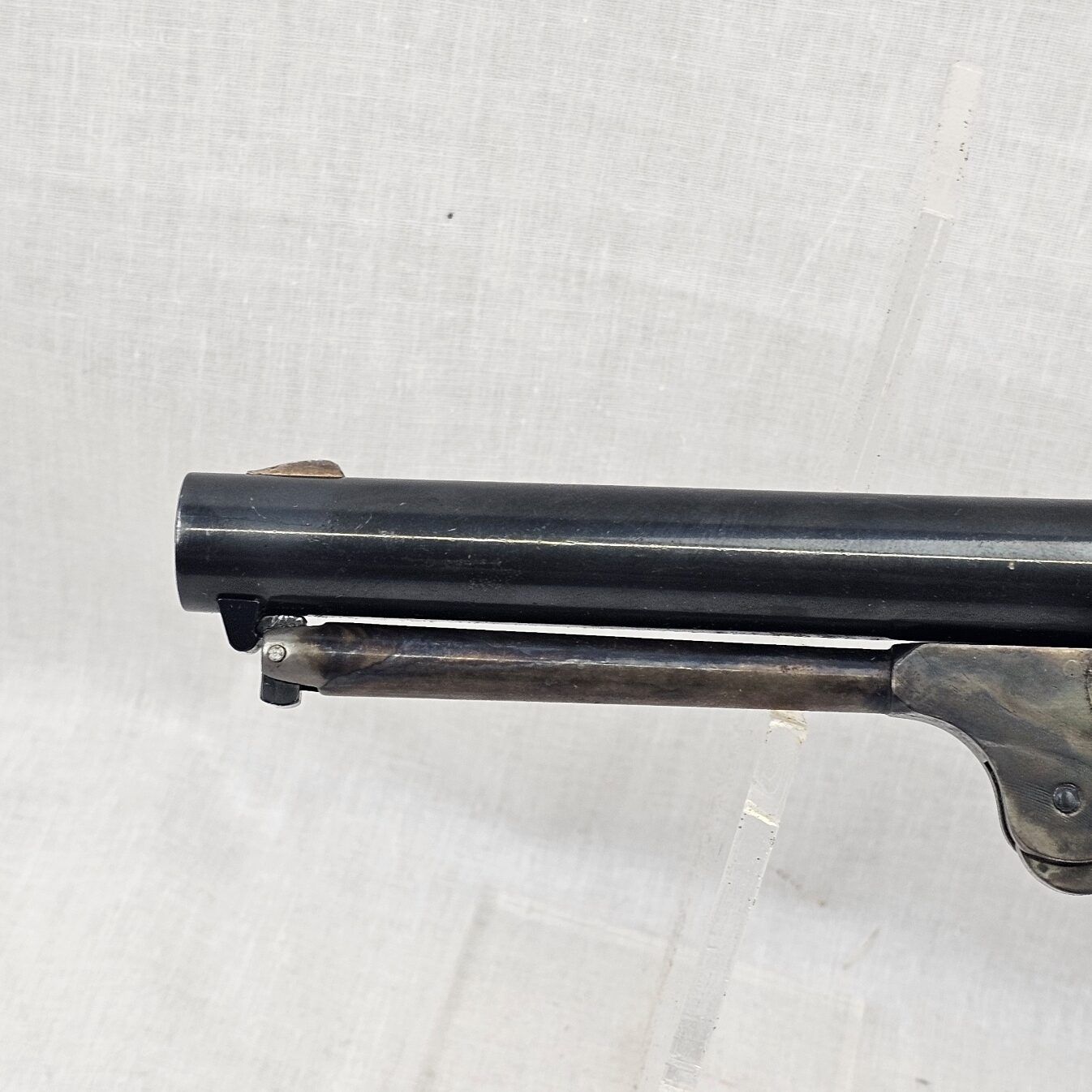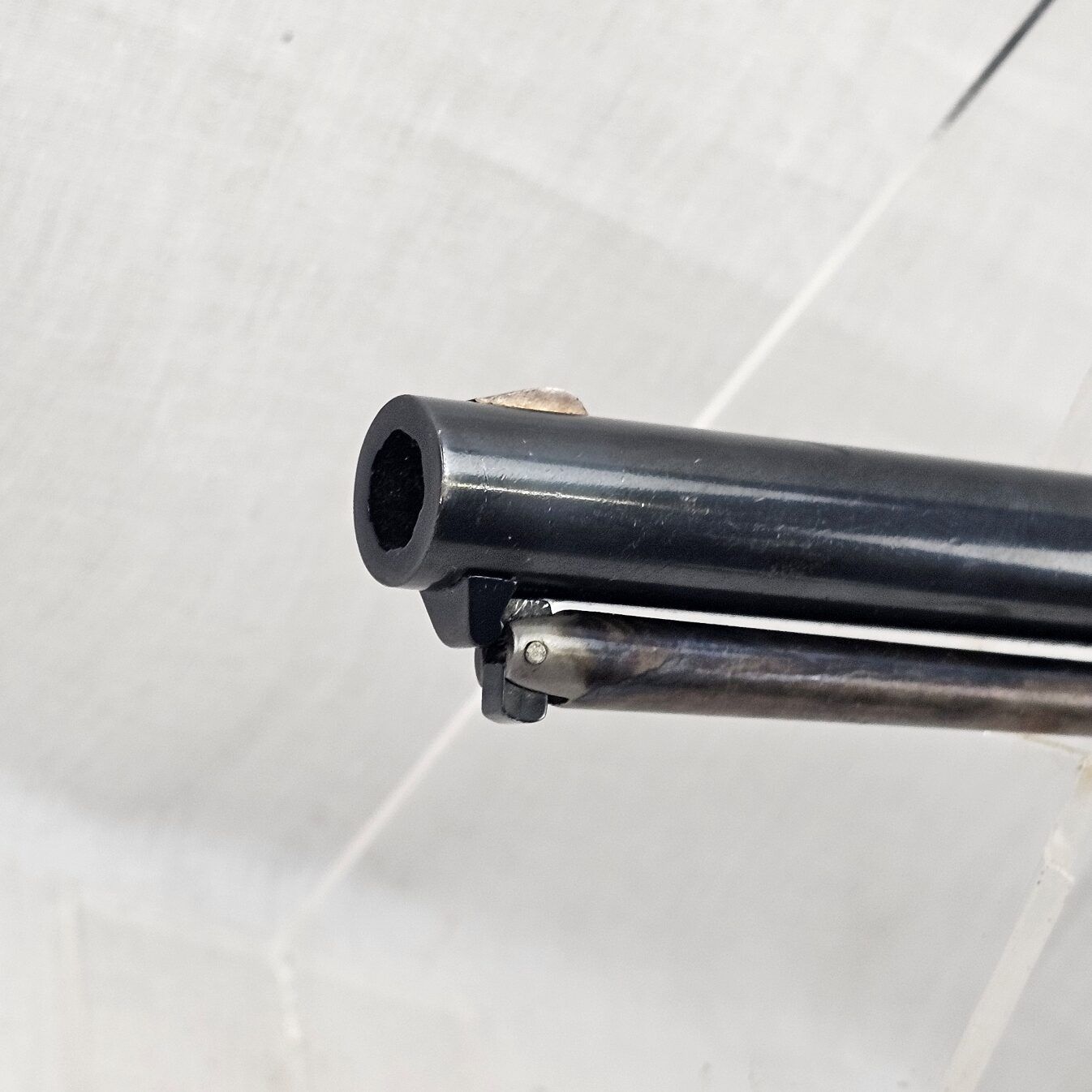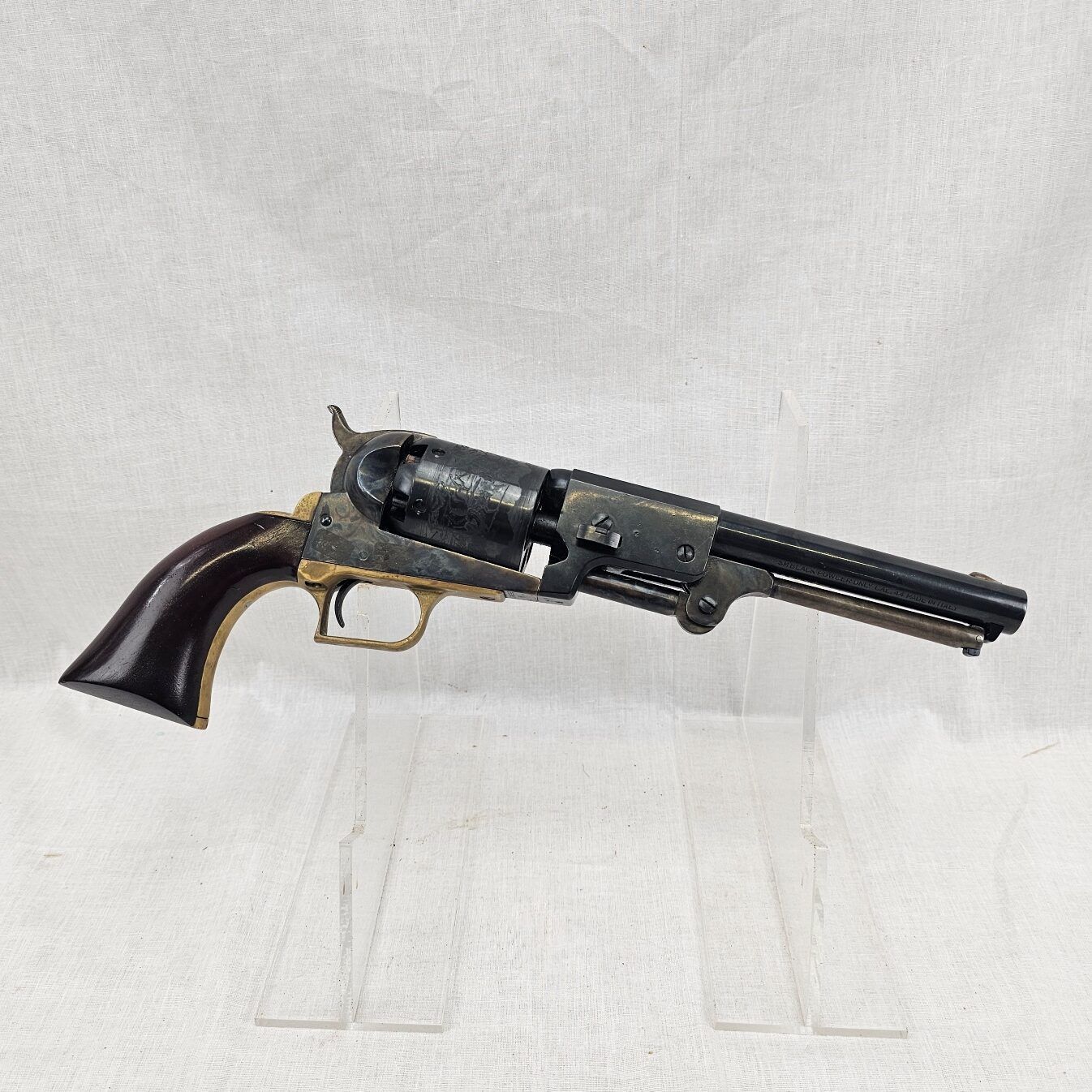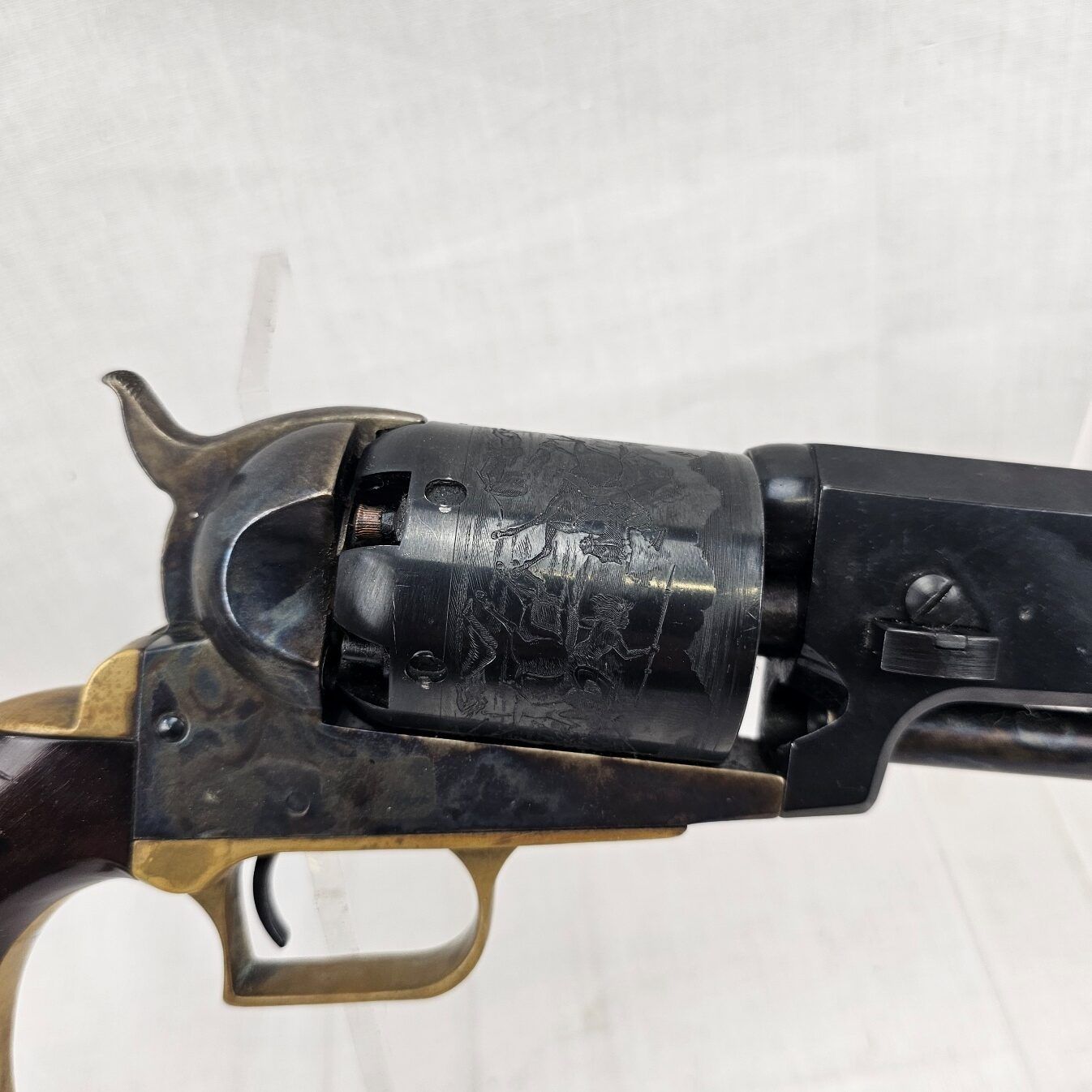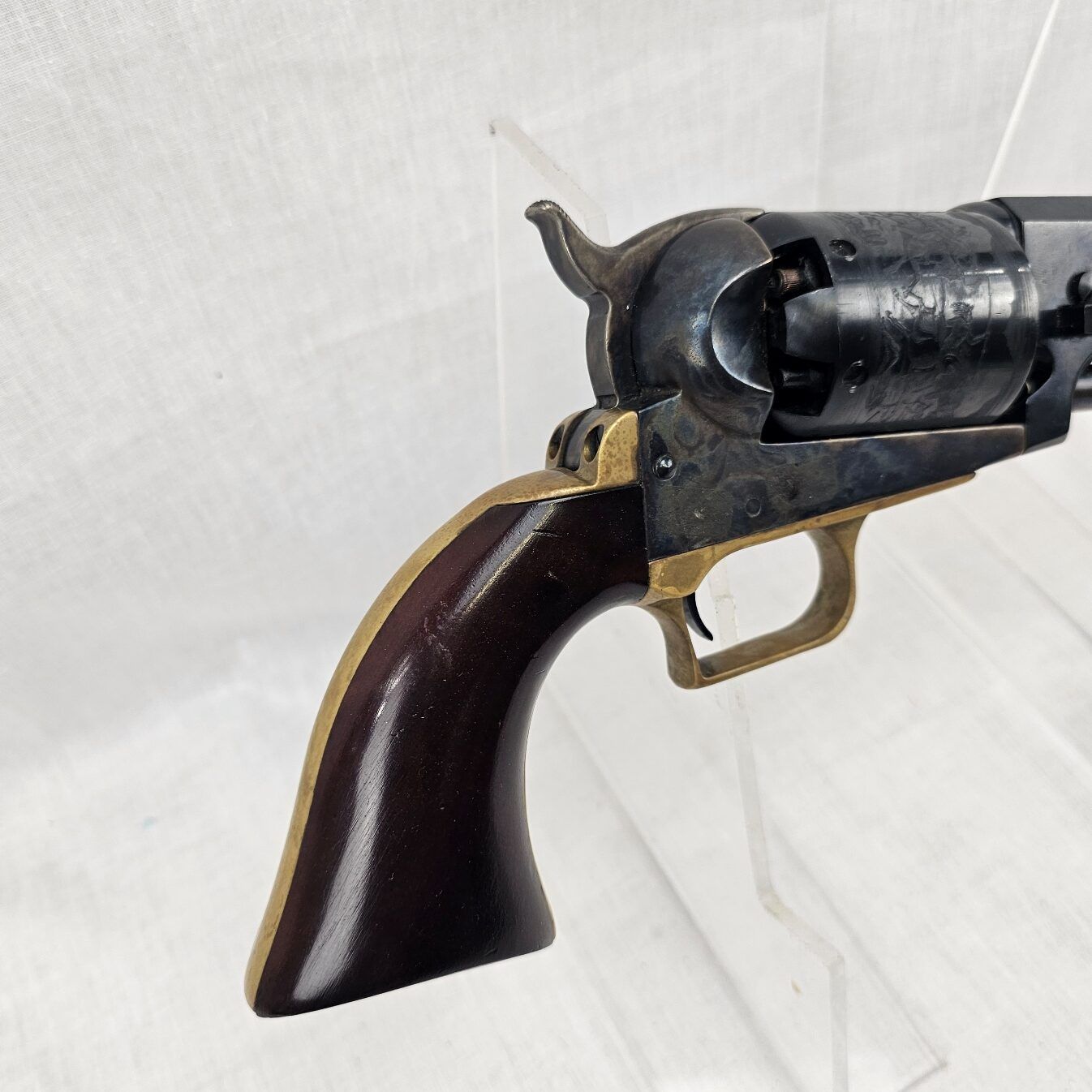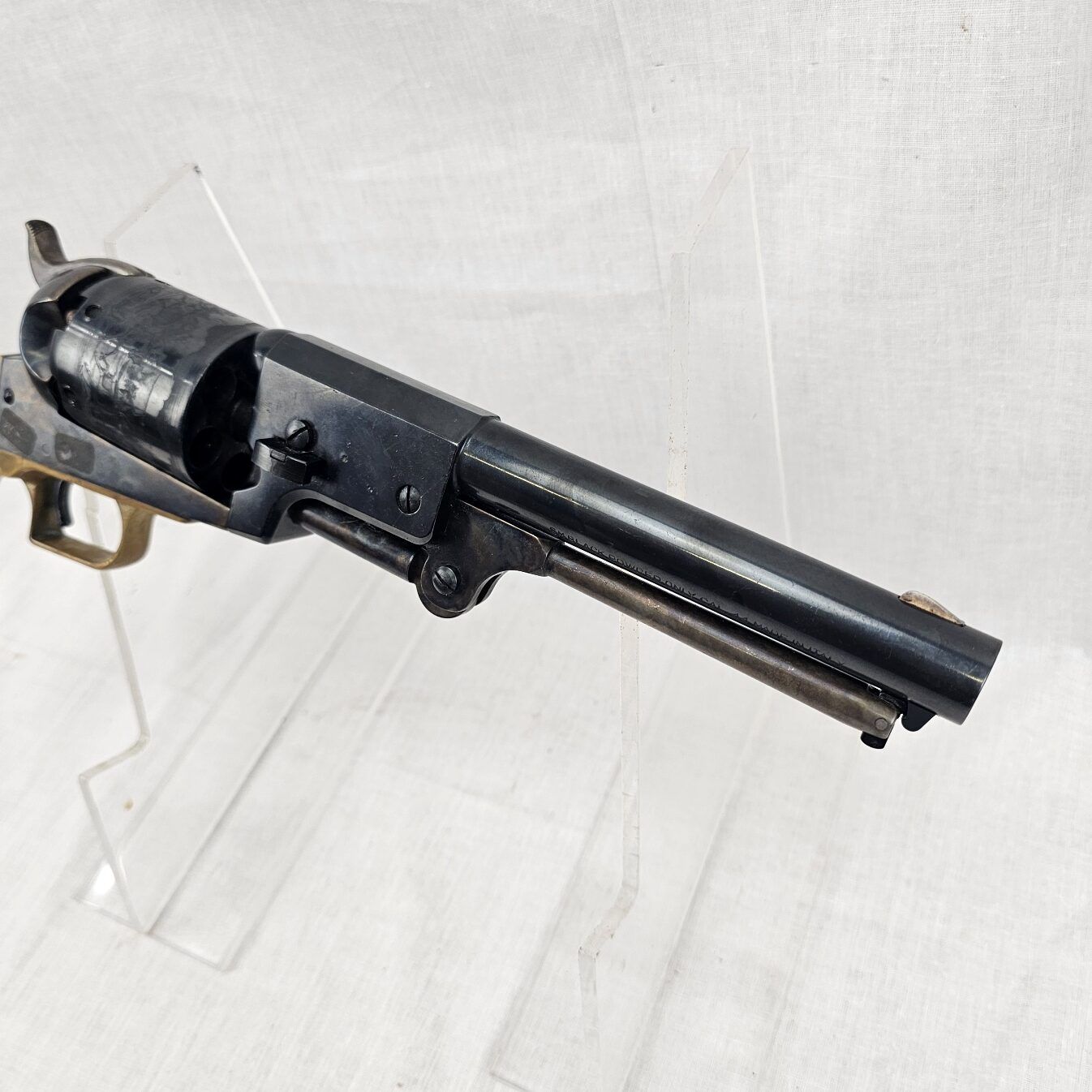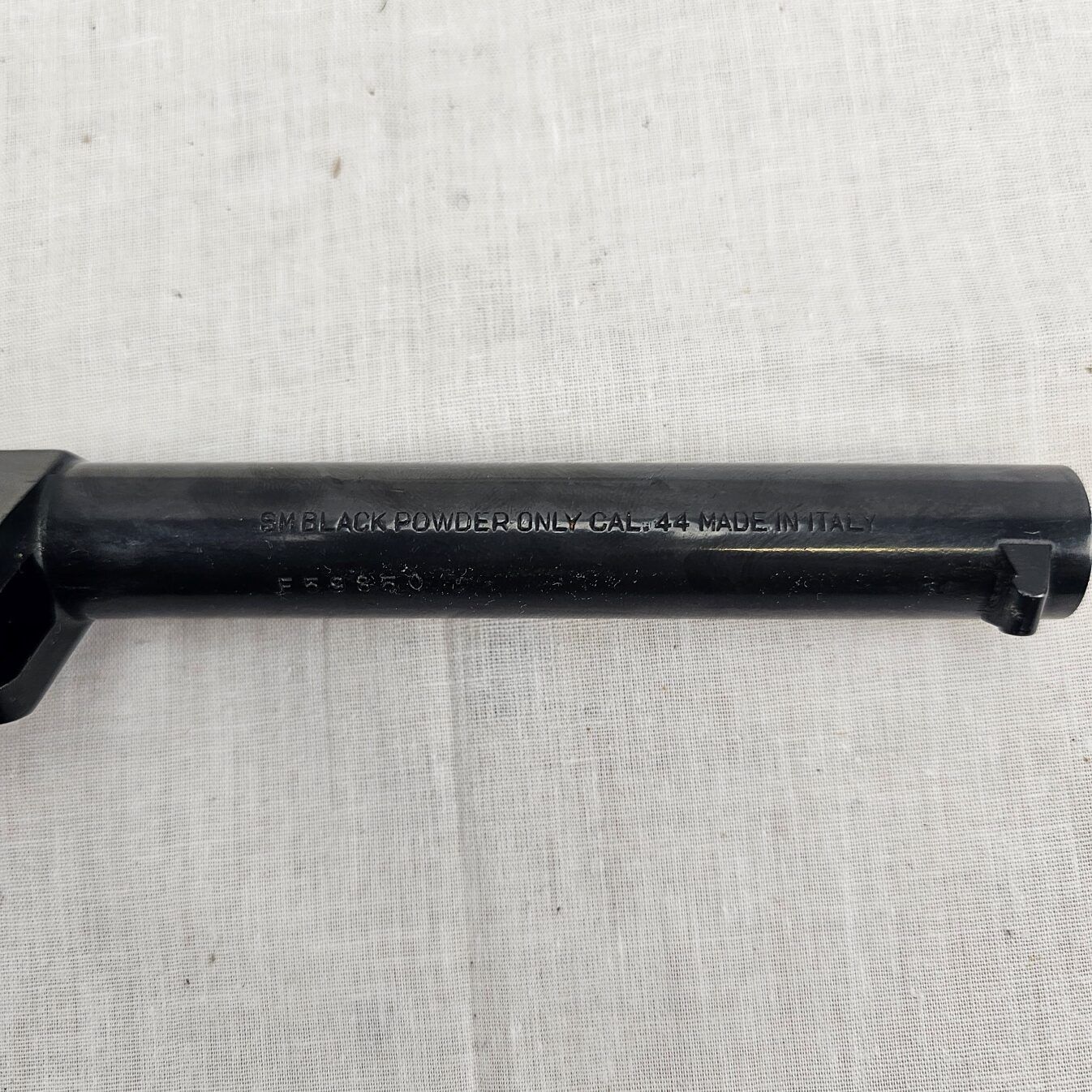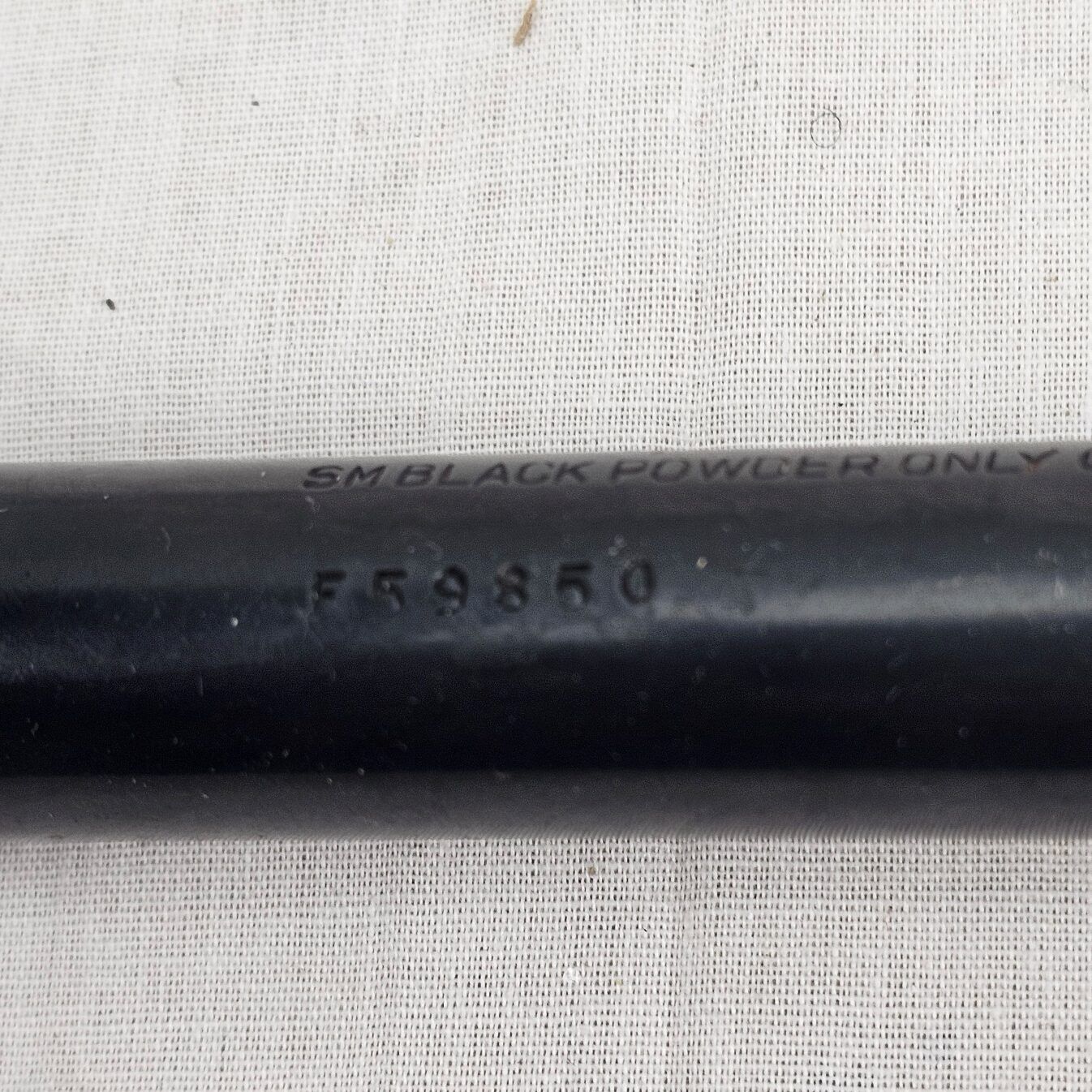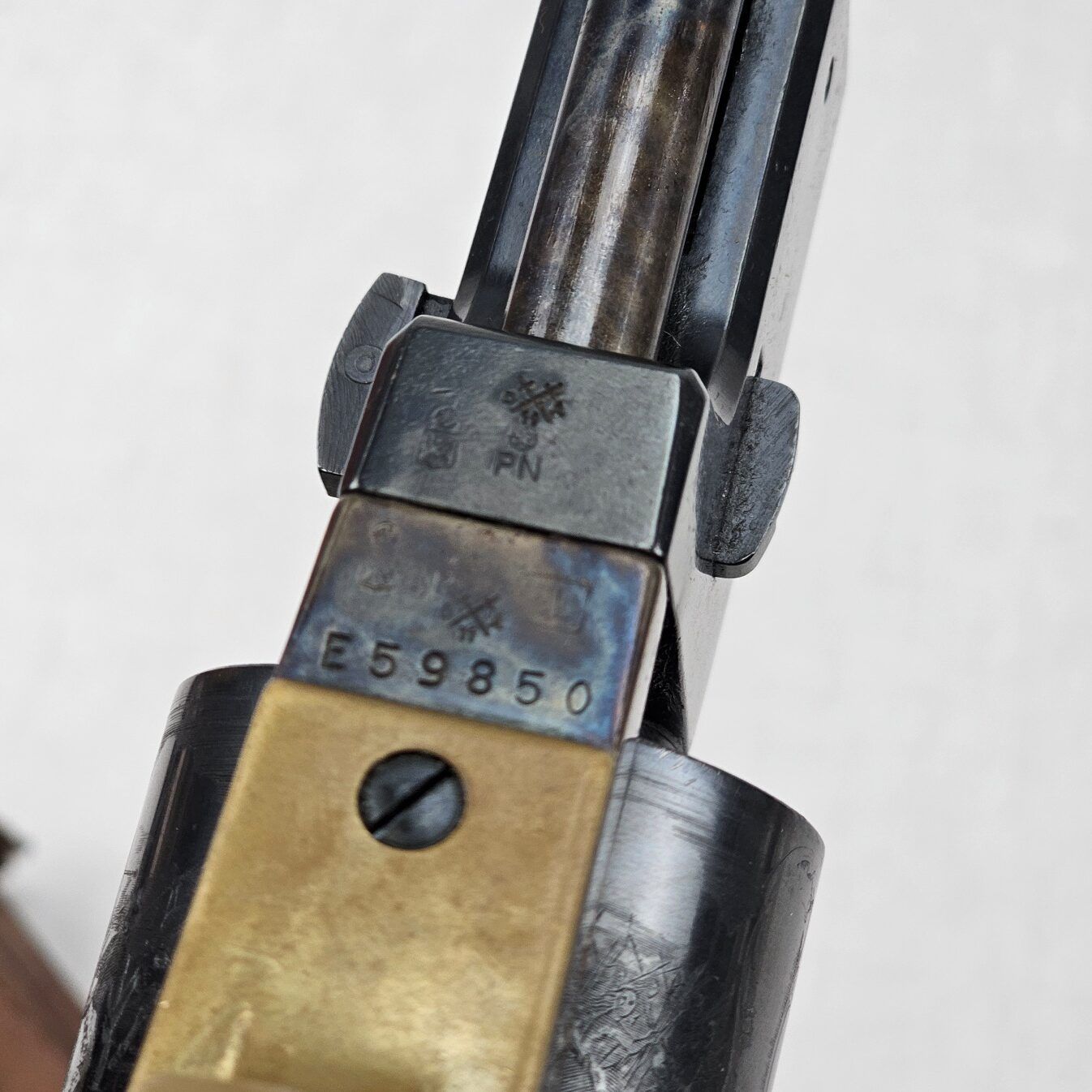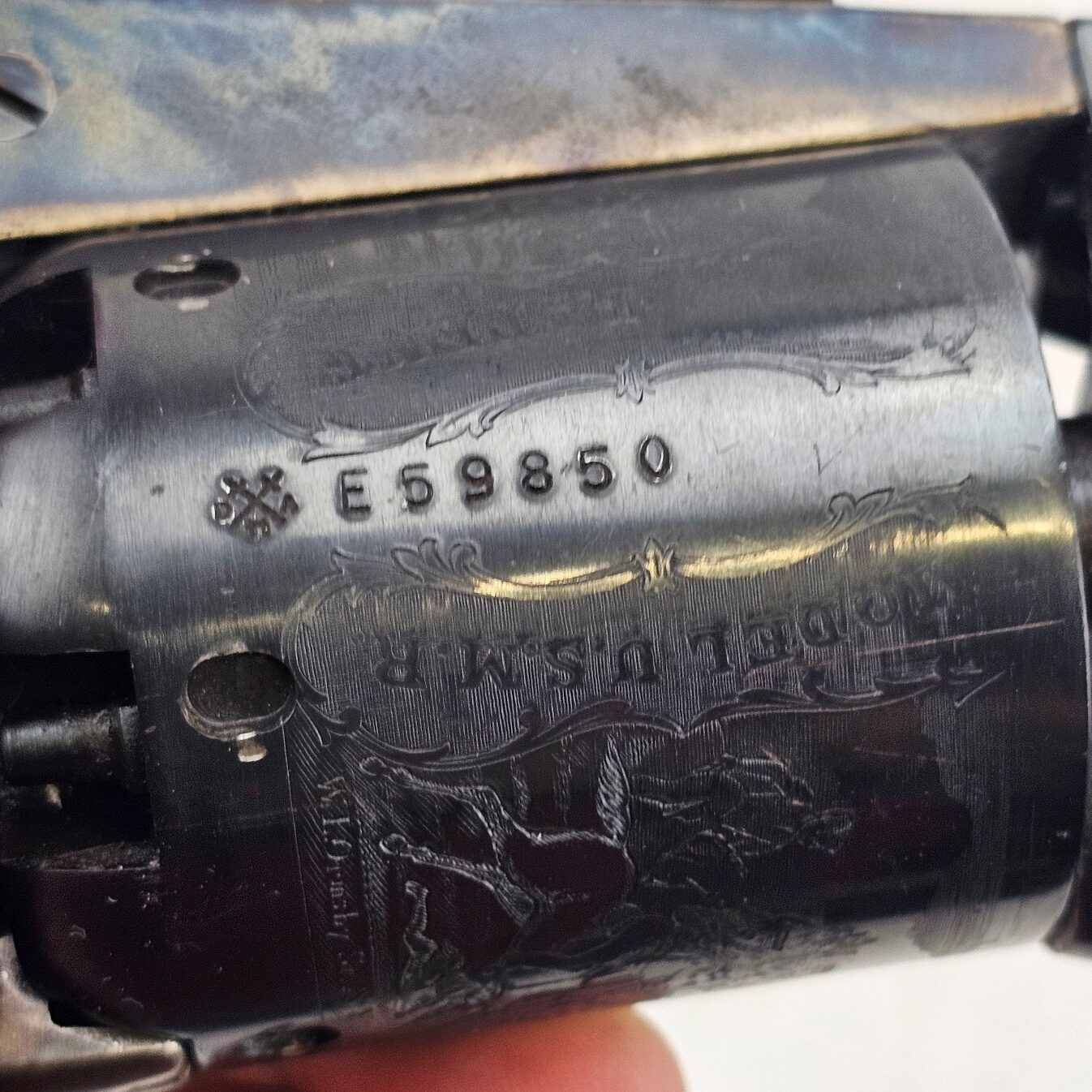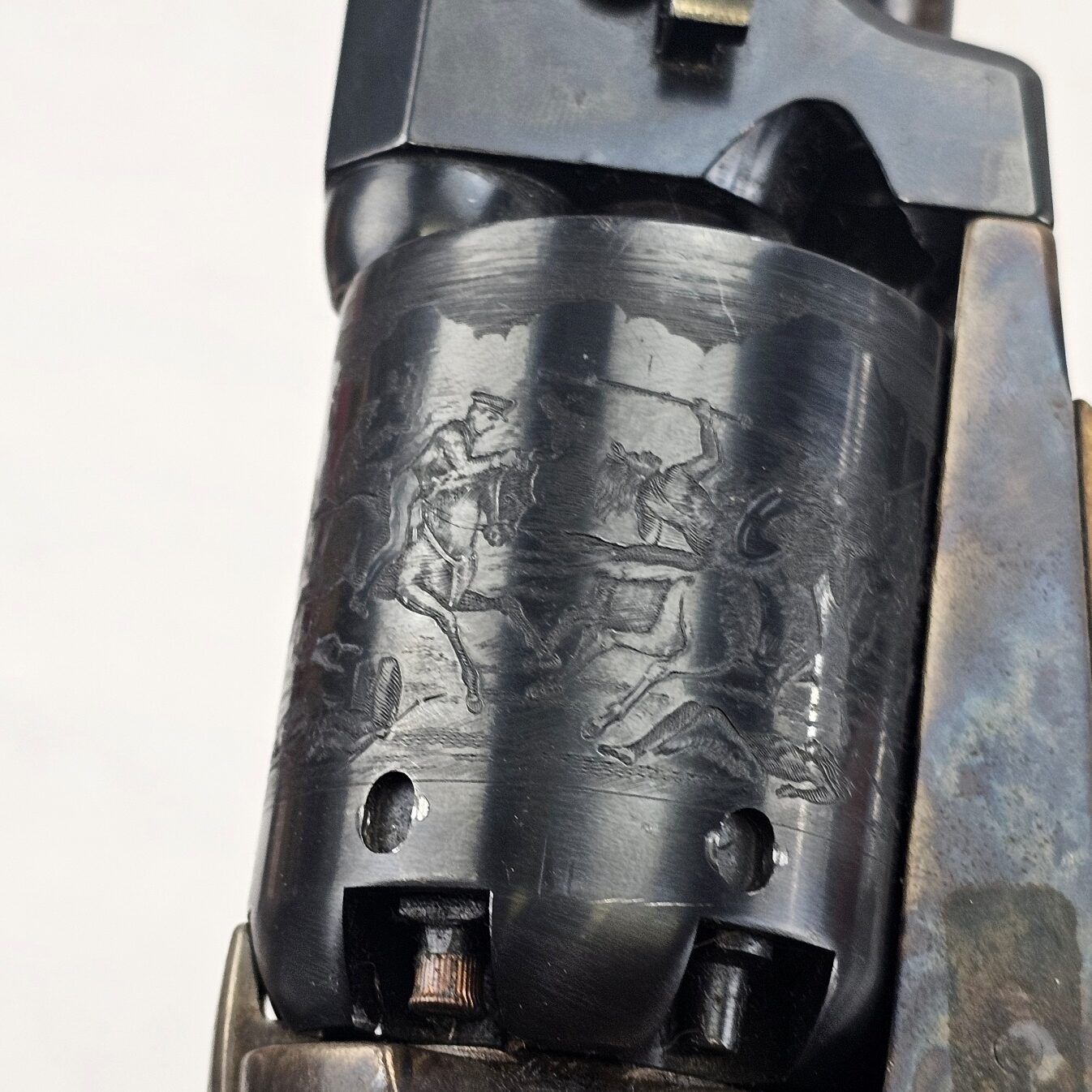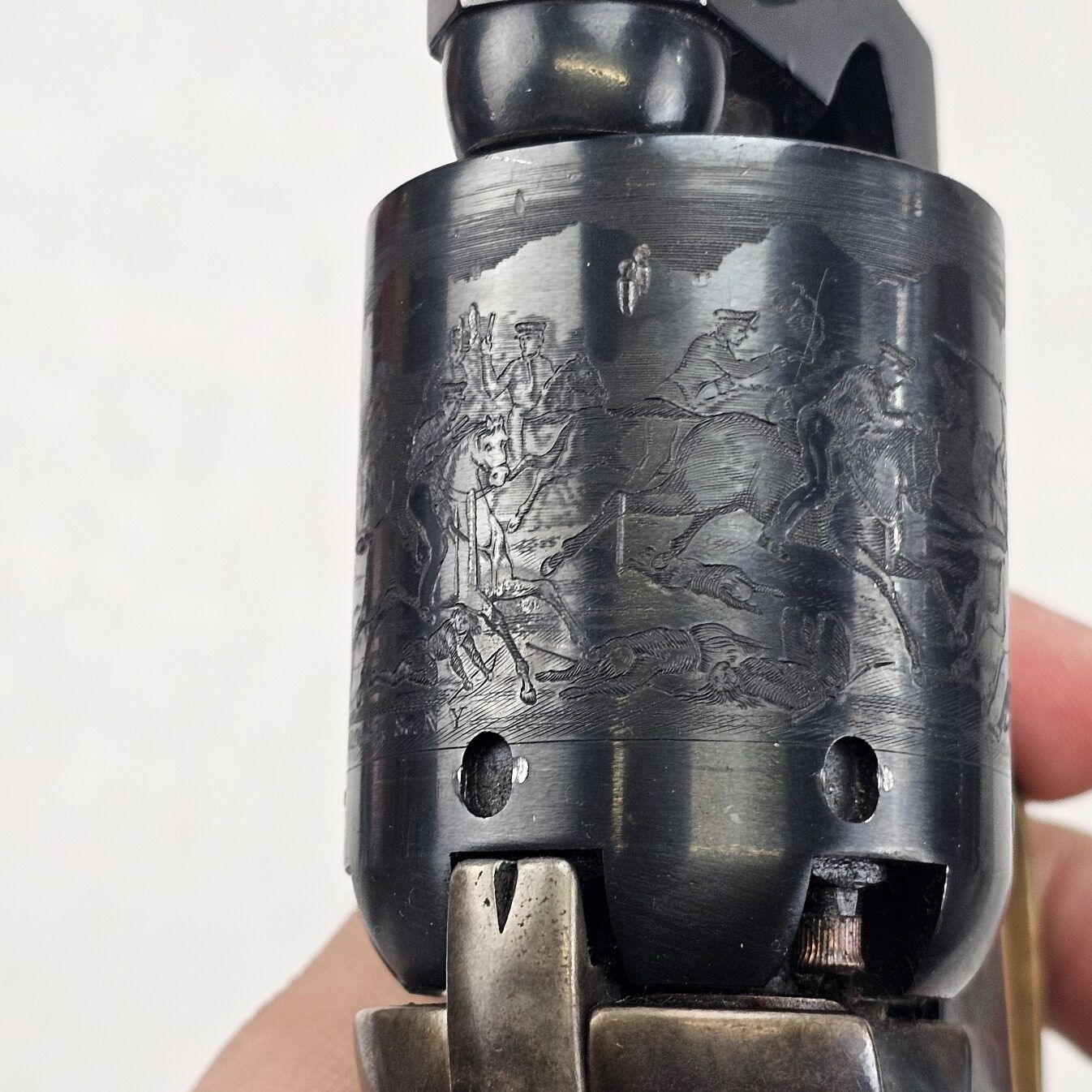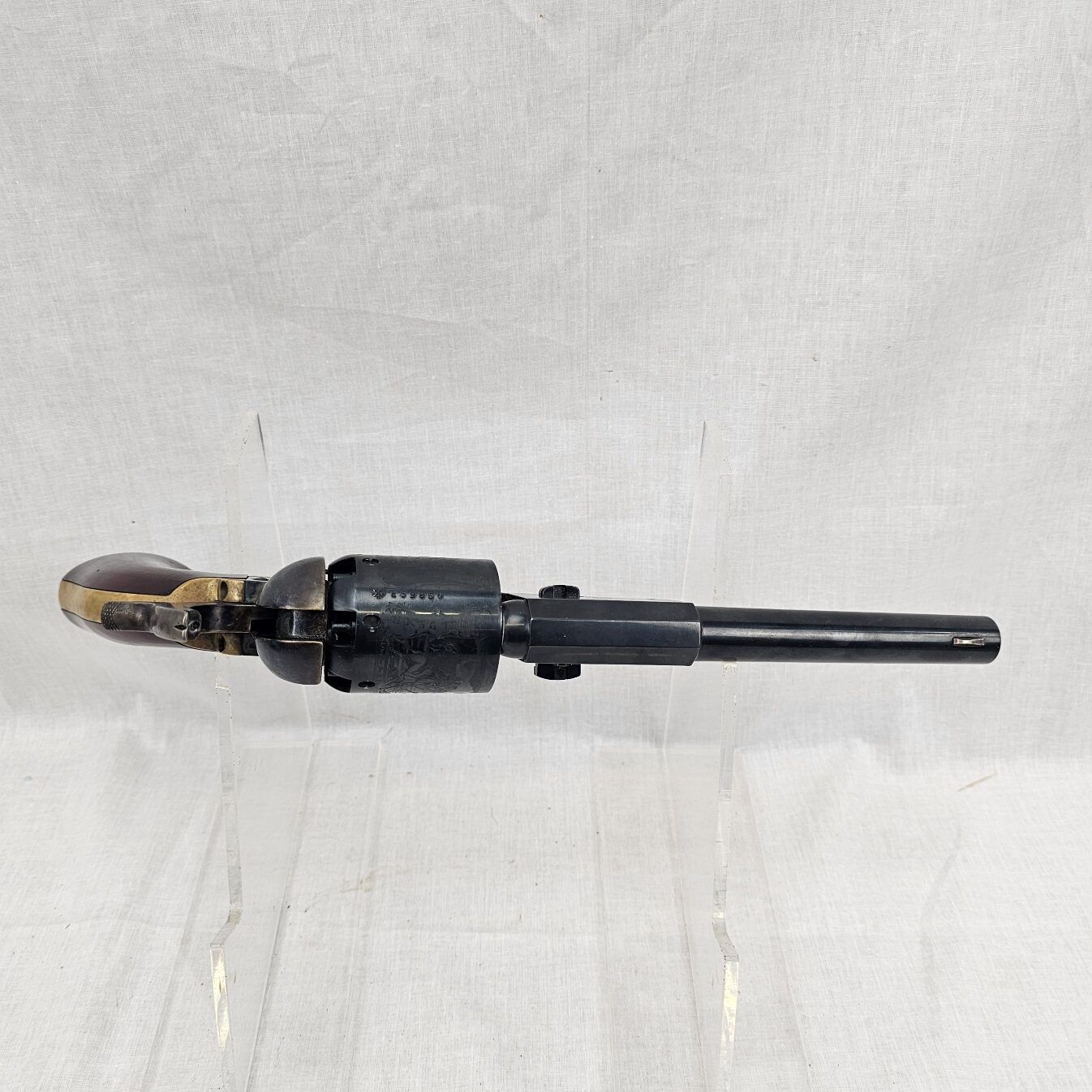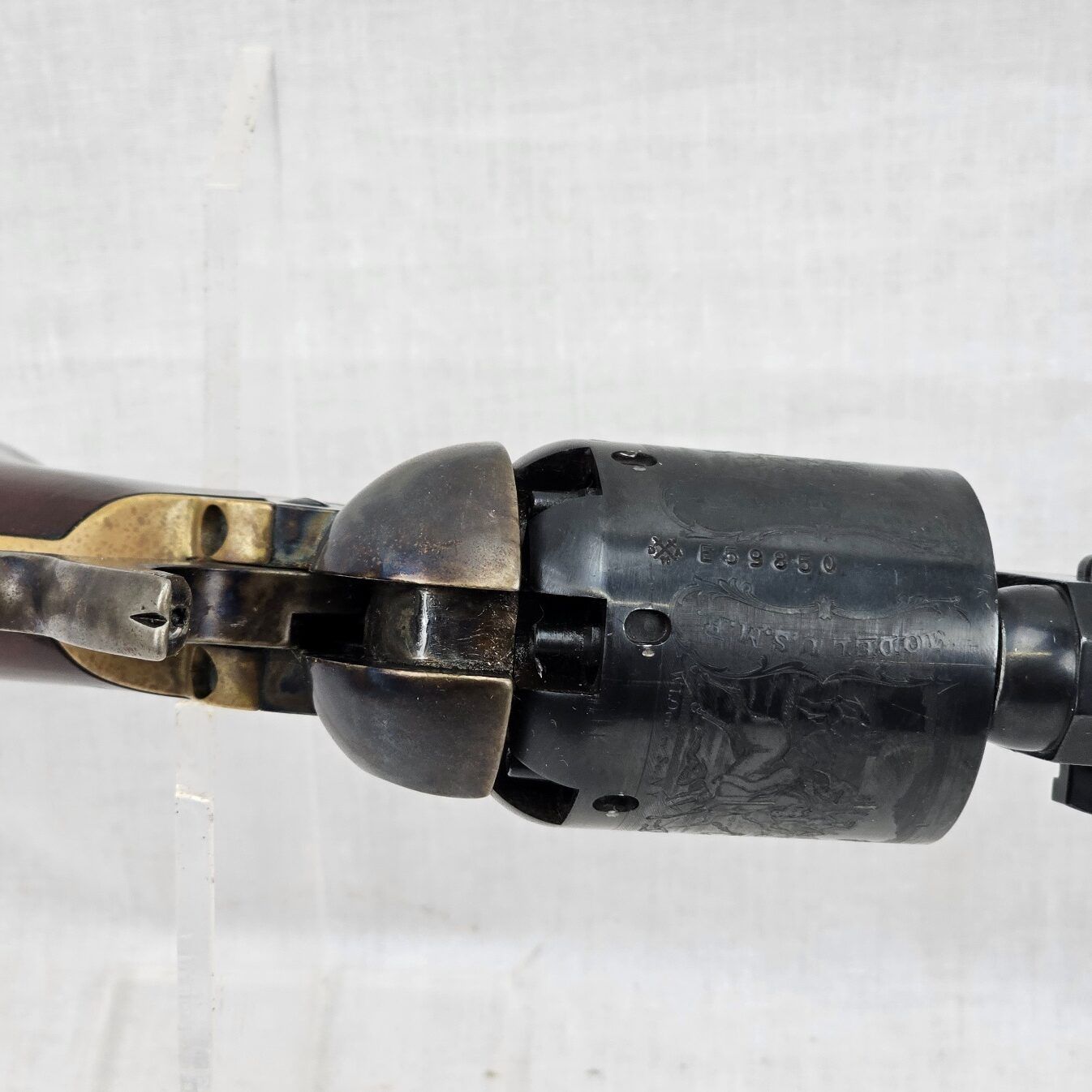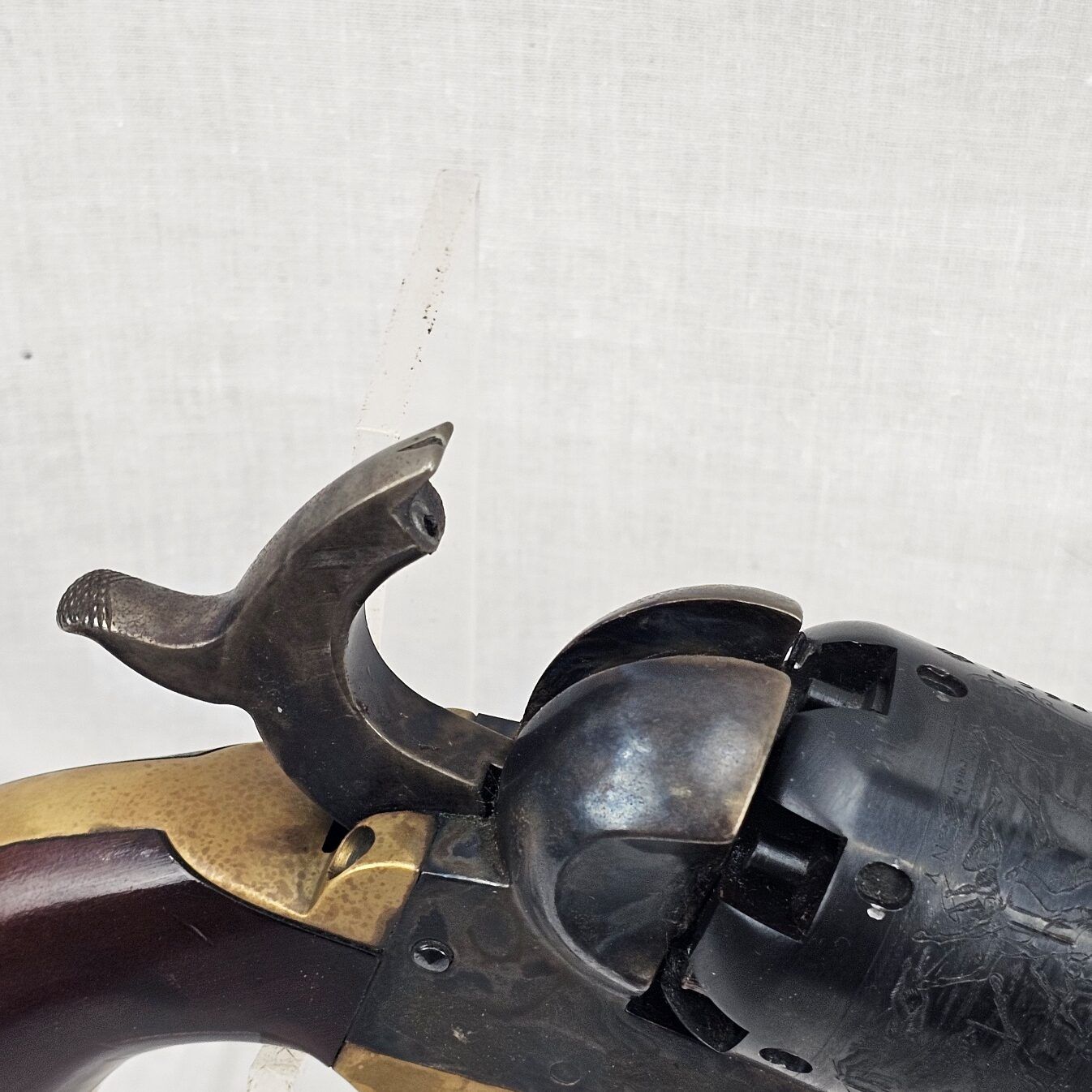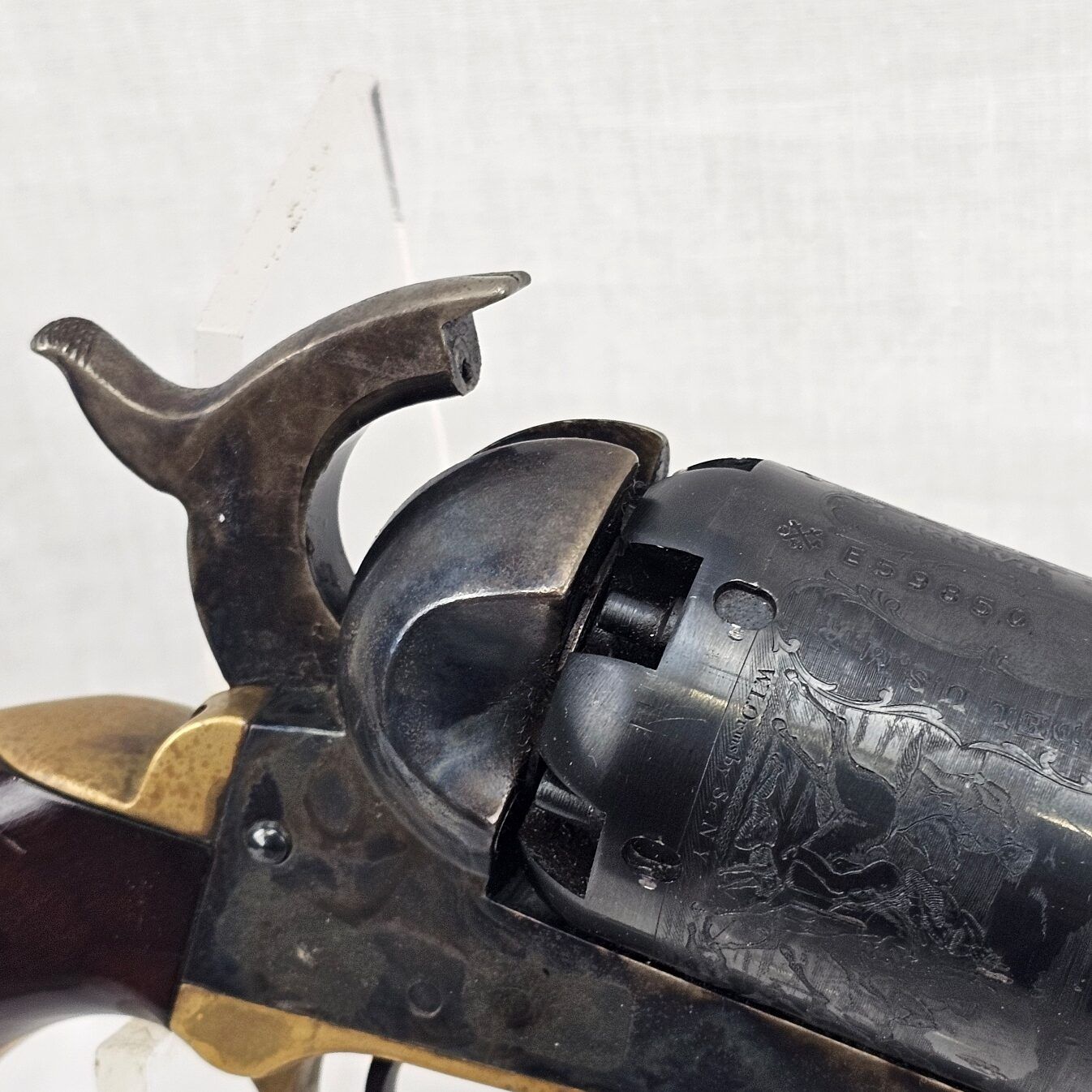~ Modern Deactivated Copy of a Colt Dragoon E59850 ~
The Colt Dragoon revolver, developed by Samuel Colt in the mid-19th century, was an important firearm in American history, particularly for its use by the U.S. military and civilian frontiersmen. Produced between 1848 and 1860, the Colt Dragoon was designed to improve upon Colt’s earlier Walker model, addressing issues like weight and reliability that were noted during the Mexican-American War. The Dragoon revolver is a large, powerful, single-action, six-shot, black powder revolver primarily chambered in .44 caliber.
The serial number E59850.
Development and Features of the Colt Dragoon:
Design and Origins:
The Colt Walker, an earlier large-caliber revolver created in 1847 in collaboration with Texas Ranger Captain Samuel Hamilton Walker, was groundbreaking but suffered from problems like excessive weight and a fragile frame. The Dragoon revolver was Colt’s response to improve on the Walker’s issues.
Colt introduced the Colt Dragoon in 1848, with the first model addressing durability issues by reinforcing the frame, slightly reducing the weight, and using a shorter, more manageable barrel.
The Dragoon was meant primarily for mounted soldiers (dragoons), hence its name. Its size and power made it effective as a cavalry sidearm.
Models of the Colt Dragoon:
There are three main models of the Colt Dragoon, each with minor improvements and changes:
First Model Dragoon (1848-1850): This original version featured a square-back trigger guard and round cylinder stops. Approximately 7,000 of these were made.
Second Model Dragoon (1850-1851): This model incorporated rectangular cylinder stops, enhancing safety by preventing the cylinder from moving accidentally. This model also came in a brass trigger guard.
Third Model Dragoon (1851-1860): This final model featured rounded trigger guards and was the most widely produced, with around 10,500 units made. It had slight improvements in metallurgy and durability.
Specifications:
Caliber: .44 caliber black powder, typically using a round ball or conical bullet.
Barrel Length: Generally 7.5 inches, though variations existed.
Weight: Approximately 4 pounds, lighter than the Walker but still heavy compared to later revolvers.
Operation: Single-action, requiring the hammer to be manually cocked for each shot.
Loading Mechanism: Like other black powder revolvers, it was loaded through the front of the cylinder with powder, a ball or bullet, and a percussion cap for each chamber.
Military and Civilian Use:
The U.S. government was a significant purchaser of Colt Dragoons, using them as a standard-issue sidearm for the military in the pre-Civil War era. Cavalry units, in particular, valued its firepower, though the revolver’s weight was a challenge.
Civilians also purchased Colt Dragoons, especially those involved in westward expansion. The revolver was popular on the American frontier for its stopping power, making it useful for both self-defense and hunting.
Historical Significance:
The Colt Dragoon is historically significant because it was one of the first truly powerful revolvers used widely in the U.S. military and on the frontier. It helped cement Samuel Colt’s reputation as a firearms manufacturer and was pivotal in the development of more advanced and manageable revolvers.
The Dragoon was a bridge between the massive Walker model and later Colt revolvers like the Colt 1851 Navy and the Colt Army Model 1860, which became some of the most iconic revolvers of the Civil War era.
It exemplifies the innovations in firearms in the mid-1800s, showcasing improvements in design and metallurgy that influenced revolver design for decades.


